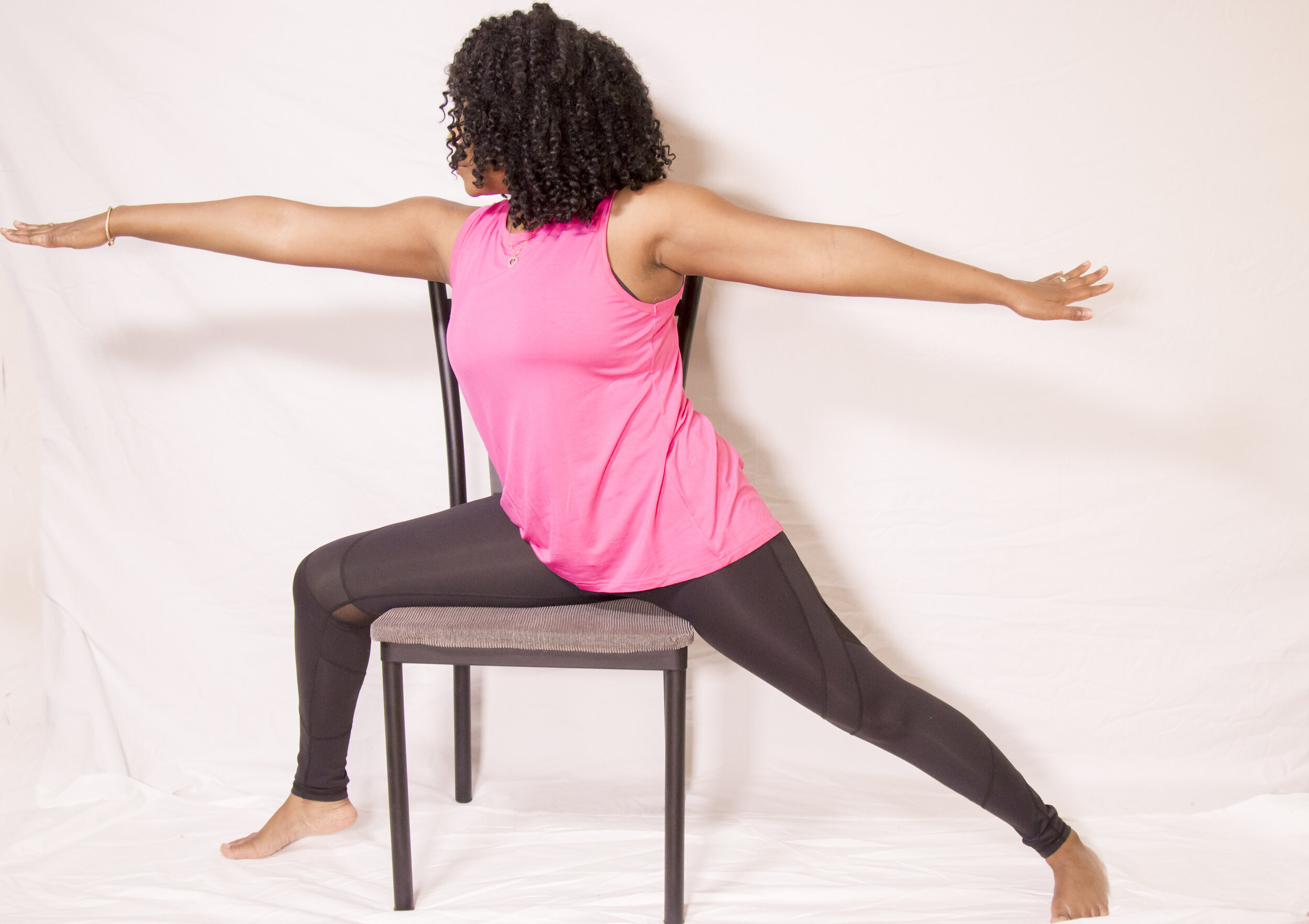
Yoga Practice:
Side Warrior Pose
Overview:
The Side Warrior Pose, or Warrior 2, engages the muscles of the calves, thighs and hips to stabilize the legs and open the pelvis, Abdominal muscles to support the spine and the trunk, the shoulder muscles to lift the arms, the front hip flexes and abducts while the back hip abducts, then inner thigh musculature lengthens, and the calf muscles lengthen in the back leg.
Potential Effects:
Strengthens muscles of the legs, seat, abdomen, and shoulders
Stabilizes ankles, knees, hips, and low spine
Stretches the inner thigh muscles
Cultivates strength and endurance
Instructions:
1. From mountain pose, step back with your left foot on an exhale. Step back far enough that as you bend your front knee, it stays above or just behind the front ankle.
2. Spiral your back heel down to the floor so that your back foot is parallel with the back of the mat, slightly turned inward. As you do this, open your hips to the side of the mat without overarching the lower back or tilting the front knee to the side.
3. Press through the legs to stabilize the ankles, knees, and hips. Lengthen through the spine, lifting up from the dome of your pelvis and reaching through the top of your head.
4. Reach the arms out to the sides, extending evenly from the front to the back from fingertip to fingertip. Turn the head and neck to gaze over the front fingers.
Warrior 2 Pose, Front ViewWarrior 2 Pose in Chair, Front View
Warrior 2 Pose in Chair, Front View
Child in Warrior 2 Pose, Front View
Warrior Flow
Warrior Flow Using a Chair as a Prop
Precautions:
Heart and circulatory conditions: practice with care and moderation
Weak or sensitive knees: shorten the stance to reduce the knee bend
Contraindications:
Recent surgery or acute injury to any key muscles or joints
Chronic or recent injury, pain, or inflammation to any key muscles or joints
Essential Principles:
Side Warrior gives students a chance to feel into the complex interplay of movements between the knees, hips, and lower back. As students open the pelvis to the side, often the body will avoid the stretch for the inner thigh by tilting the front knee sideways or overarching the lower back – both which can compromise the pathways of weight and balanced joint space in the knees and spine. Having students focus on the range of motion in the pelvis that’s available without compromising neighboring joints, rather than just opening the hips to the side, can help them refine internal body awareness and practice listening and responding to internal cues.
This posture can be a great place to cultivate proprioception – an awareness of the body in space. Having students step back from the front of the mat into the pose requires students to move and orient their body without visual support. Asking them to reach evenly from fingertip without leaning forward or back requires them to feel and adjust position of the trunk relative to the legs. Opening the hips without collapsing the low back or knee requires awareness of the relationship between deep skeletal and muscular structures. All of these proprioceptive challenges are worth exploring with your students.
Options:
Shorten the stance for a more moderate expression of the pose, allowing the front knee to bend less deeply.
Support balance with one hand holding the back of a chair or the edge of a desk.
Bring your hands to your hips for a simpler expression of the pose, or to feel more precisely what the hips and pelvis are doing.
Helpful Hints:
Never overdo or force any yoga movement. If you begin to experience discomfort or pain, release the posture. Find a variation of the posture that serves your body and practice best.
Practice with self-compassion and non-judgement
Side Warrior can be done standing, in a chair, or using a chair as a prop.
Content from NYCDOE YMTP² curricular materials





